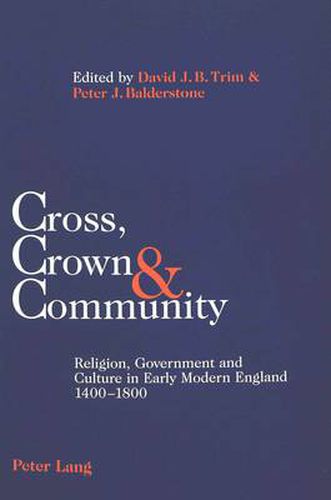Readings Newsletter
Become a Readings Member to make your shopping experience even easier.
Sign in or sign up for free!
You’re not far away from qualifying for FREE standard shipping within Australia
You’ve qualified for FREE standard shipping within Australia
The cart is loading…






This title is printed to order. This book may have been self-published. If so, we cannot guarantee the quality of the content. In the main most books will have gone through the editing process however some may not. We therefore suggest that you be aware of this before ordering this book. If in doubt check either the author or publisher’s details as we are unable to accept any returns unless they are faulty. Please contact us if you have any questions.
The values and institutions of the Christian Church remained massively dominant in early modern English society and culture, but its theology, liturgy and unity were increasingly disputed. The period was overall one of institutional conformity and individual diversity: the centrality of Christian religion was universally acknowledged; yet the nature of religion and of religious observance in England changed dramatically during the Reformation, Renaissance, and Restoration.
Further, because English culture was still biblical and English society was still religious, the state involved itself in ecclesiastical matters to an extraordinary extent. Successive political and ecclesiastical administrations were committed to helping each other, but their attempts to mould religious beliefs and customs were effectively attempts to modify English culture. Church and state were complementary, yet because they were ultimately distinct estates, they could work only, at best, uneasily in partnership with each other.
Cultural output is thus an ideal lens for examining this period of tension in the church, state and society of England. The case studies contained in this volume examine the intersection of politics, religion and society over the entire early modern period, through distinct examples of cultural texts produced and cultural practices followed.
$9.00 standard shipping within Australia
FREE standard shipping within Australia for orders over $100.00
Express & International shipping calculated at checkout
This title is printed to order. This book may have been self-published. If so, we cannot guarantee the quality of the content. In the main most books will have gone through the editing process however some may not. We therefore suggest that you be aware of this before ordering this book. If in doubt check either the author or publisher’s details as we are unable to accept any returns unless they are faulty. Please contact us if you have any questions.
The values and institutions of the Christian Church remained massively dominant in early modern English society and culture, but its theology, liturgy and unity were increasingly disputed. The period was overall one of institutional conformity and individual diversity: the centrality of Christian religion was universally acknowledged; yet the nature of religion and of religious observance in England changed dramatically during the Reformation, Renaissance, and Restoration.
Further, because English culture was still biblical and English society was still religious, the state involved itself in ecclesiastical matters to an extraordinary extent. Successive political and ecclesiastical administrations were committed to helping each other, but their attempts to mould religious beliefs and customs were effectively attempts to modify English culture. Church and state were complementary, yet because they were ultimately distinct estates, they could work only, at best, uneasily in partnership with each other.
Cultural output is thus an ideal lens for examining this period of tension in the church, state and society of England. The case studies contained in this volume examine the intersection of politics, religion and society over the entire early modern period, through distinct examples of cultural texts produced and cultural practices followed.